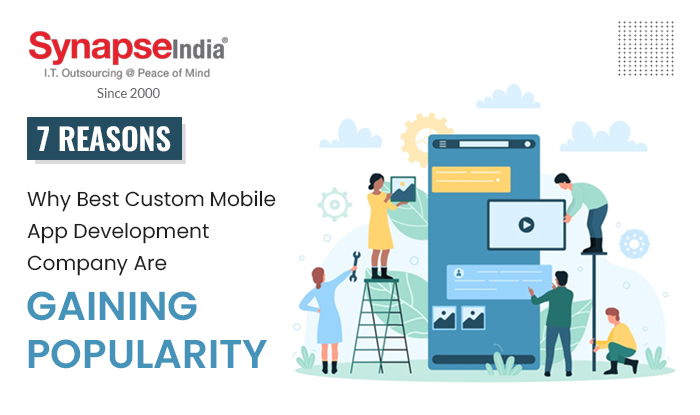 19 Apr 2025
19 Apr 2025“Explore the key differences between AI Bots and Traditional Chatbots. Learn how each technology supports customer service, boosts efficiency, and impacts business growth in 2025.”
.jpg)
In 2025, many businesses are choosing between AI-powered chatbots and traditional chatbots to improve customer support and make daily tasks easier.
The global chatbot market is expected to hit $9.56 billion in 2025, growing at an annual rate of 23.3% from 2025 to 2030, as per Grand View Research. This rise shows how more companies are turning to chatbots, especially the ones powered by AI, to meet customer needs and work more efficiently. Still, deciding between AI bots and traditional chatbots isn’t always simple. Both come with their own strengths and limits.
This blog breaks it down by covering what they are, how they work, what they can do, the latest trends, and how businesses are using them in real situations. The goal is to help companies choose the right option based on their needs.

Traditional chatbots, also called rule-based chatbots, have been a staple in customer service for over a decade. They work based on predefined scripts and decision trees. These bots depend on matching keywords from what a user types, then giving a set response. For example, if someone asks, "What are your business hours?" The chatbot finds the keyword "business hours" and replies with a preprogrammed answer. Their working mechanism involves:
1. User Input:The user types a message or selects an option.
2. Keyword Matching:The chatbot scans the input for specific keywords or phrases.
3. Response Retrieval:Based on the matched keywords, it retrieves and displays the appropriate response from its script.
4. Decision Tree Navigation:For more complex interactions, it may guide the user through a series of questions to narrow down the issue and provide a solution.
AI-powered chatbots, or AI bots, are a new kind of automated customer service tool. These bots use technologies like natural language processing (NLP), machine learning, and deep learning to understand what users are saying and respond in a way that feels more natural and accurate. Their key technologies include:
1. User Input: The user types or speaks a query.
2. Language Understanding: The chatbot uses NLP to analyze the input, determining the user's intent and extracting relevant entities (e.g., dates, locations).
3. Context Management: The chatbot maintains context from previous interactions to provide coherent and relevant responses.
4. Response Generation: Based on the understood intent and context, the chatbot generates an appropriate response, which could be from a knowledge base or dynamically created.
5. Learning and Improvement: The chatbot collects feedback and data from interactions to refine its models and enhance future performance.
AI bots can handle complex inquiries that need an understanding of context and multiple variables. For example, they can help resolve billing disputes or provide detailed product information. This makes customer support faster, more accurate, and available around the clock.
AI bots offer tailored product or service suggestions based on user preferences and behavior. This helps businesses improve cross-selling and upselling opportunities by showing customers exactly what they’re likely to need or want.
AI bots assist with everyday tasks like booking appointments, making reservations, or managing schedules. This is especially useful in sectors like healthcare and travel, where timely responses and accurate scheduling are important.
AI bots can detect and respond to customer emotions during interactions. By understanding how a customer feels—whether they’re happy, confused, or frustrated—they provide more empathetic support, which helps improve customer satisfaction and loyalty.
To better understand which type of chatbot is suitable for your business, let's compare their key features in a detailed table:
| Feature | Traditional Chatbots | AI Bots (AI-Powered Chatbots) |
|---|---|---|
| Technology | Rule-based, decision trees | NLP, machine learning, AI |
| Capabilities | Simple, predefined responses | Complex, context-aware responses |
| Learning | Static, no learning | Dynamic, improves over time |
| Cost | Lower | Higher |
| Implementation Time | Quicker | Longer |
| Flexibility | Limited to scripts | Highly flexible |
| User Experience | Can be frustrating for complex queries | More natural and satisfying |
| Multilingual Support | Requires separate scripts | Built-in, supports multiple languages |
| Scalability | Limited by script complexity | Can handle high volumes efficiently |
This table highlights that while traditional chatbots are cost-effective and easy to implement, AI bots offer superior capabilities and user experiences, especially for businesses with diverse and complex customer needs.
For example, consider a customer asking, "Can I return a damaged product?" A traditional chatbot might provide a generic return policy, while an AI bot understands the context and offers a precise answer, such as, "Yes, you can return a damaged product within 30 days for a full refund. Please visit our returns page for details."
Benefits of AI-Powered Chatbots for Businesses
Additionally, AI chatbots can act as internal assistants for employees, helping with tasks such as scheduling, information retrieval, and process automation, thereby enhancing productivity and allowing staff to concentrate on more strategic initiatives.
The chatbot industry is growing quickly, with key trends and data shaping its future in 2025. Here are some insights based on various reports:
The global chatbot market is expected to reach $9.56 billion by 2025, growing at a rate of 23.3% annually from 2025 to 2030, according to Grand View Research.
By 2025, it's predicted that 95% of customer interactions will be powered by AI technologies like chatbots. This shows how much these tools are becoming a part of everyday business operations, as reported by Learn.g2.
Retail & E-commerce:
Retail and e-commerce hold about 30% of the chatbot market share in 2024. Chatbots here help with customer support and personalized shopping experiences, according to Grand View Research.
Healthcare:
Healthcare is also seeing more chatbots used for scheduling appointments, supporting patients, and offering telemedicine. For example, Northwell Health used chatbots to cut call center volume by 50%, as reported by Chatbase.co.
Finance:
In the finance sector, chatbots are being adopted for customer service, fraud detection, and offering financial advice. They’re especially popular in banking and insurance.
Chatbots are expected to save businesses billions every year by automating customer service and reducing operational costs. This trend is expected to continue, according to Juniper Research.
Chatbots are becoming even more advanced by integrating with other technologies like voice recognition, augmented reality, and blockchain. These upgrades help improve both functionality and security, keeping chatbots at the forefront of customer engagement.
To understand how AI chatbots are making a real difference, let’s look at two examples from different industries that show their benefits and effectiveness.
Klarna, a global leader in online shopping solutions, introduced an AI assistant powered by OpenAI to handle customer service queries. Within just one month, the AI assistant managed 2.3 million conversations, making up two-thirds of Klarna’s customer service chats. This is the equivalent of 700 full-time agents, and it resulted in a 25% drop in repeat inquiries. Customers are now able to resolve issues in under 2 minutes, compared to 11 minutes before, all while maintaining high satisfaction levels similar to human agents. Klarna expects a $40 million profit boost in 2024 from this initiative. Klarna’s CEO, Sebastian Siemiatkowski, shared, "Our AI assistant has not only met but exceeded our expectations in terms of performance and customer satisfaction."
Northwell Health, New York’s largest healthcare provider, implemented an AI chatbot to handle appointment scheduling, rescheduling, and cancellations. This has reduced their call center volume by 50%, freeing up staff to focus on more complex patient concerns. The chatbot takes care of routine tasks, making operations more efficient and improving patient satisfaction. This shows how AI bots can have a big impact on healthcare.
Choosing between a traditional chatbot and an AI-powered chatbot depends on several factors specific to your business, including:
If your customers typically have straightforward questions that can be answered with predefined responses, a traditional chatbot may suffice. However, for more complex interactions requiring understanding of context and intent, such as resolving billing disputes or providing detailed product information, an AI bot is essential.
Traditional chatbots are generally less expensive and quicker to implement, making them a practical choice for small businesses with budget constraints. In contrast, AI bots require significant investment in technology and expertise but offer long-term benefits in efficiency and customer satisfaction.
If providing a superior, personalized customer experience is a priority, investing in an AI bot can offer significant advantages in terms of customer satisfaction and loyalty, as evidenced by case studies like Klarna and Northwell Health.
For businesses expecting high volumes of customer interactions, particularly during peak periods, AI bots can handle multiple conversations simultaneously without compromising quality, ensuring smooth service delivery.
Ultimately, the decision should align with your business objectives, customer needs, and available resources.
Consulting with us can help you navigate this choice and implement the most suitable solution, ensuring a smooth integration that maximizes benefits and minimizes challenges.
SynapseIndia builds AI-powered chatbots that help businesses improve customer support, automate daily tasks, and respond faster to user queries. The team works closely with clients to understand their specific needs, whether it’s handling FAQs, booking appointments, processing orders, or offering product recommendations.
Using tools like Dialogflow, Microsoft Bot Framework, Rasa, and OpenAI, SynapseIndia creates smart bots that can chat naturally with users across websites, mobile apps, and messaging platforms. These bots can be connected to existing systems like CRMs, help desks, or eCommerce platforms to make work smoother and faster.
SynapseIndia also takes care of the full development process from designing chatbot flows and training AI models to integrating the bot with your system and testing it. The goal is to create bots that not only work well but also learn and improve over time.
Whether a business wants a simple support bot or a more advanced virtual assistant, SynapseIndia ensures that the chatbot fits well with their goals, is easy to use, and delivers results.

As we've explored, AI-powered chatbots offer significant advantages over traditional chatbots, particularly in handling complex queries, providing personalized experiences, and continuously improving through machine learning.
While traditional chatbots remain a viable option for simpler tasks, the future of customer service in 2025 and beyond lies in the capabilities of AI bots. With the chatbot market poised for substantial growth and businesses increasingly adopting AI technologies, now is the time to consider how these tools can benefit your organization.
For those looking to stay competitive and deliver exceptional customer experiences, partnering with experts like SynapseIndia can ensure a successful implementation of AI chatbot solutions tailored to your specific needs.
Take the next step in enhancing your customer service. Connect with us today to discover how we can help your business thrive in the digital age.


 31 Jan 2023
31 Jan 2023
